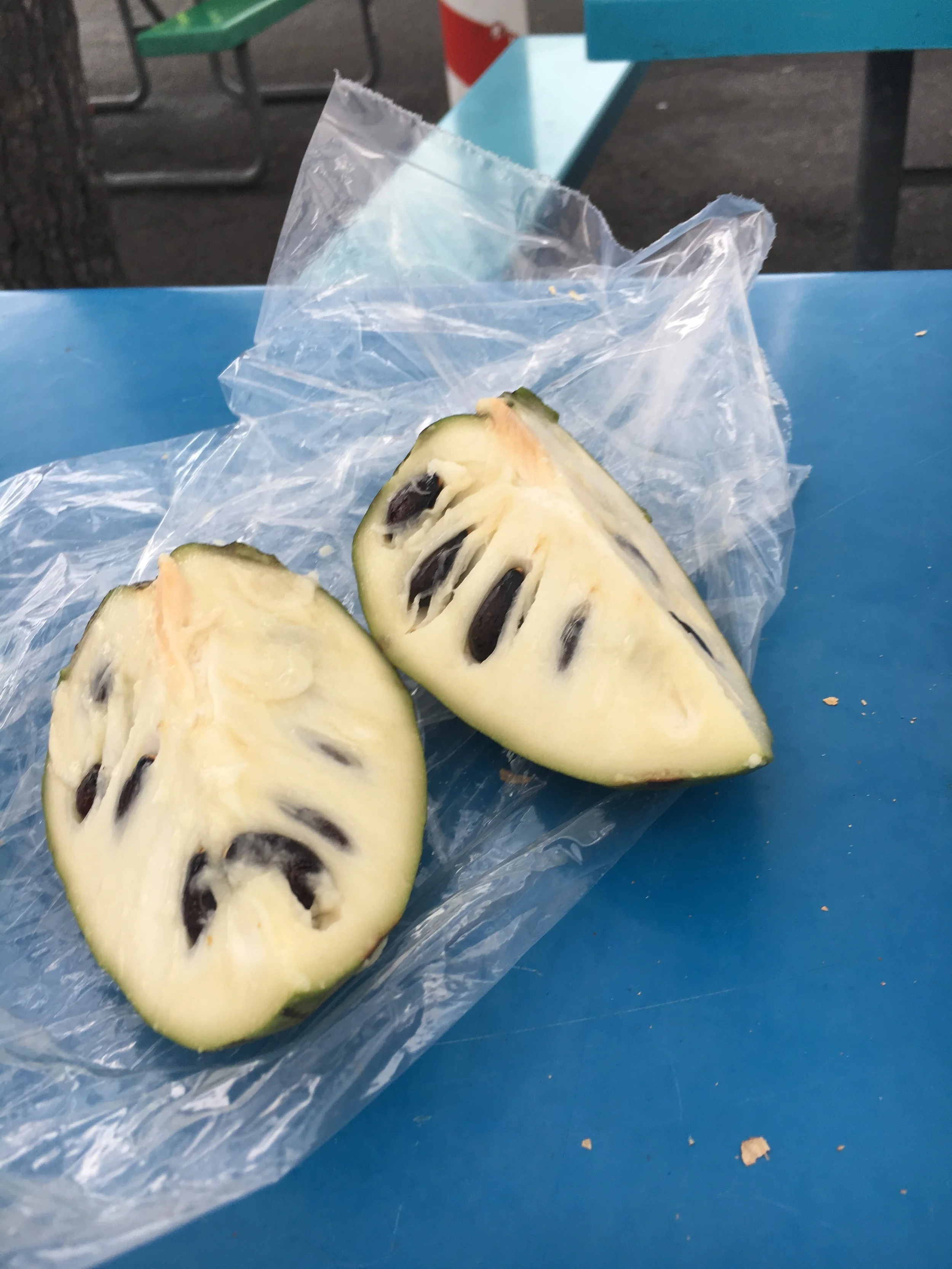#FruitFriday: The Treasure that is the Chirimoya - Taste & Health Benefits
When my friend John passed me a piece a chunk of this super juicy, cream colored fruit- it was hot and I was thirsty; so I ate first and asked questions later.
Pictures are from my second time eating chirimoya at the San Jose Farmer's Market.
My first question was:
“What the heck is this?!”
The uniquely sweet taste was paired with an almost yogurt-like texture that had me scraping as much flesh as I could off the skin with my teeth while waiting for an answer. He said, “YO isn’t this the best it’s like my favorite fruit!” Shout out to John and his “Yo’s”-I miss the guy.
It took me until I'm writing this now to figure out how to pronounce it (visual learner), but John told me it was called “chirimoya”, in Peru’s indigenous language of Quechua. (Commonly referred to in the U.S. as cherimoya).
But I definitely agreed that it was my new favorite fruit given the creamy texture, flavor that isn’t done justice by comparing it to a combination of a sweet orange, strawberry, and banana hybrid, and juiciness that was both refreshing and filling.
As with most fruits, I imagined that it was packed with antioxidants and vitamins. I’ve since confirmed that in addition to antioxidants found in most fruits, chirimoya does you give you a blast of vitamin C, B6, potassium, fiber, and 5 grams of protein!
I miss the days of being able to pick the fruit from a Peruvian street cart and being eager to fork over a dollar or less for a hefty portion of the fruit. In the U.S. farmer’s markets where I’ve seen Cherimoya- it runs for 5-8 bucks a pound.
If you haven’t tried it- I’d say it’s worth the investment. You could also always ask the kind people at the fruit stands for a sample :)




